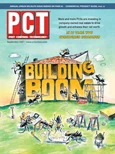Mammals, whether humans, wolves, whales or mice, require certain types of habitats. The better the species-specific habitat, the greater the chance of their long-term survival and producing numerous and healthy offspring.
Human structures offer rodents and other mammals protection from the elements, comfortable temperatures, food opportunities and usually a myriad of structural nooks in which to hide from danger. In short, buildings often serve as excellent ecological equivalents for their natural harborages (e.g., tree cavities, hollow logs, rock crevices and ground burrows, brushy piles, etc.). The threat of a severe winter, for example, is minimized if a mouse discovers a “cave” below a suburban residence’s dishwasher, or a comfy nest within the forgotten box of papers in a cubicle of a downtown office complex.
Even still, though rodents may discover our building interiors as suitable general habitats, once inside, they further seek out the most favorable specific habitats. In this manner, they can maximize the chances of survival and proliferation. We can refer to these areas within our buildings as the rodent-vulnerable areas (RVAs). In many cases, the RVAs of buildings are fairly predictable.
Knowing the rodent-vulnerable areas of your commercial and residential facilities is valuable for several reasons. First, in the service industry, time is money. We are limited in the amount of time we have to service a typical client. If we don’t know where in a building pests — in the case here, rodents — are most active, we can waste precious time performing only cursory inspections, or installing equipment in unproductive areas. Conversely, when we know how to focus on the pest-vulnerable areas of buildings, we can provide fast and efficient control of the infestation and reduce costly callbacks.
The purpose of this article is to highlight the importance of understanding rodent-vulnerable areas, and to list via the following tables and figures some everyday common examples of RVAs in both commercial and residential sectors.
Tables 1 and 2 below provide a list of the more common rodent-vulnerable areas within a few different types of commercial and residential buildings. The table format facilitates a quick overview and may serve, perhaps, as a checklist while on the job. Table 3 provides an additional list of conditional keywords while on the job for quickly locating rodents inside buildings. Finally, Figures 1-3 (taken in the summer of 2007) help illustrate a few real-world examples of rodent-vulnerable areas.
Summary. As pest professionals, we know pests become pests because, in part, they can avoid our detection for prolonged periods until they become infestations. Consequently, clients often do not have a clue that mice or other pests may have recently moved into their building.
But we as pest professionals are trained to see what the public overlooks. Our training provides us with “professional insight” as to which areas we can expect to find rodents in our commercial and residential buildings once they invade.
The rodent-vulnerable areas of buildings we service, whether commercial or residential, should be inspected every visit regardless of whether or not there are any complaints from a client. We cannot expect rodents to travel away from their comfort zones in search of our traps and/or baits, and thereby “alerting” us to their presence.
Focusing in on the RVAs provides a pro-active service. In other words, maximizing the chances of preventing pests — which to a large degree is why the public believes they are hiring a pest professional in the first place.
In some ways, we can think of knowing the RVAs of buildings as sort of a GPS system for finding the sources of pests. The RVAs can help to quickly pinpoint the interior geographics as to where we need to work when attempting to eliminate pests infestations. You are much less likely to get lost. Or, waste valuable service time.
Click here to download Bobby Corrigan's checklists for assist in identifying common rodent-vulnerable areas.
The author is president of RMC Consulting, Richmond, Ind.

Explore the September 2007 Issue
Check out more from this issue and find your next story to read.
Latest from Pest Control Technology
- Moneypenny is a Provider of Virtual Receptionists
- Video: Top 10 PCT Photo Contest Finalists
- Massey Services Expands with Southeast Commercial Region
- Pest Management Foundation Announces Kevin J. Burns Scholarship
- How to Identify Clover Mites
- Termite Threat Halted in Southern Florida
- PCT Media Group Adds Managing Editor Katie Hobbins
- Evens Clerjuste on Team Communication as Company Growth Point





